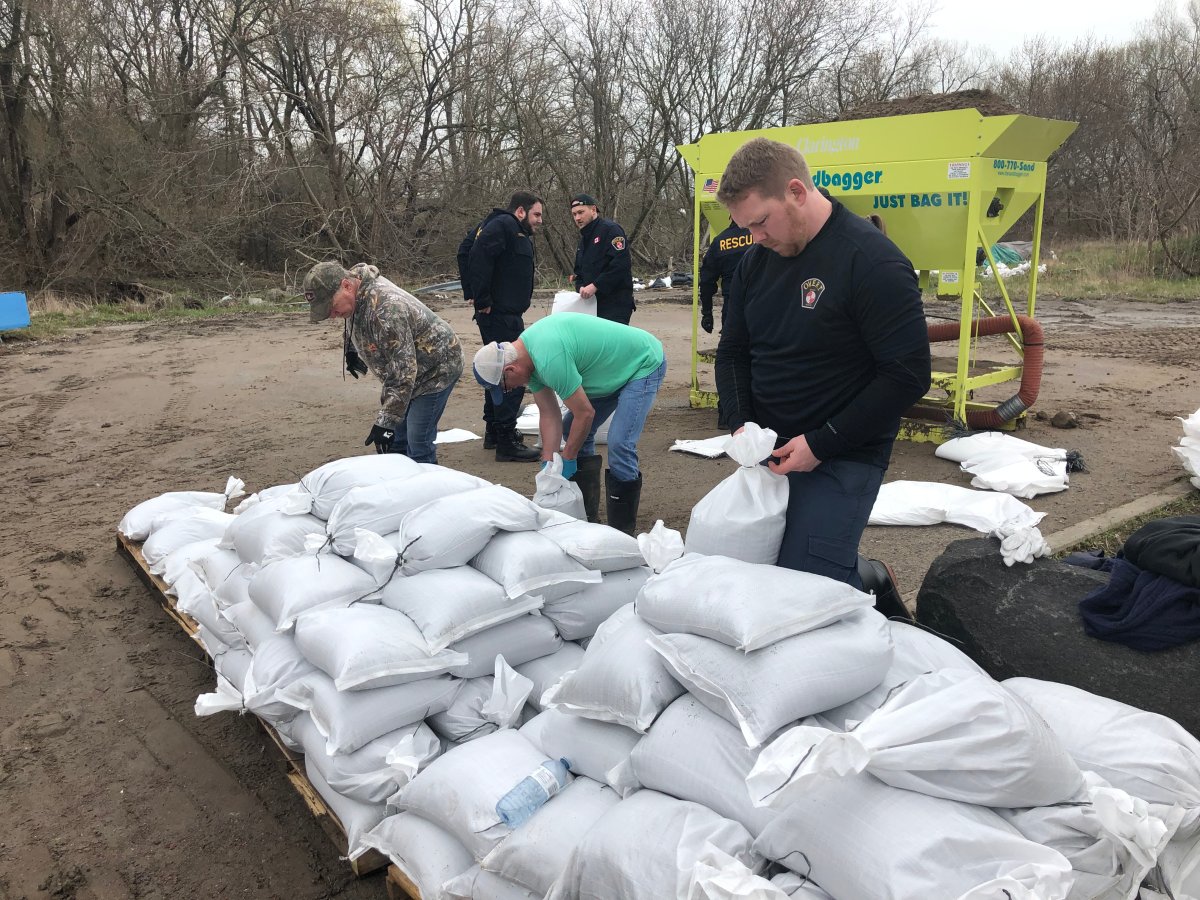Volunteers gathered at the Clarington animal shelter to fill hundreds of sandbags on Thursday. It’s all in an effort to try to prevent rising lake waters from flooding their Bowmanville properties.

“Lake levels are continuing to rise, and we’re in a wait-and-see mode,” said Clarington municipality fire Chief Gord Weir. Town officials along with several volunteers are preparing for the worst — as one of the main concerns is water eroding the foundation beneath the number of houses that line the lake.
“We’ve taken up portions of the deck boards and lined sandbags underneath,” said Cyrus Humel. The local resident is helping a family friend protect their property. He says the water has already been washing up over the shore, forcing them to take a number of measures to prevent any major damage to the home.
“We’ve also used some skids on the front doors … to prevent the waves from smashing over the top,” Humel said.
This home is just one of many with owners trying to figure out how to prevent a repeat of a flooding event like the one in 2017. It was then that residents were plagued by high waves and rain storms that caused major flooding to properties in the Cedar Crest Beach and West Beach areas.
WATCH: Bracebridge mayor says lower water being seen could be relief for some areas impacted by flooding

That fear of flooding is also being echoed by the Central Lake Ontario Conservation Authority. In a release sent out Thursday morning, officials said: “Lake Ontario water levels continue to rise and have reached levels that are likely to result in flooding of low‐lying areas due to static water levels and combinations of water levels, storm surge and wave uprush.”
“We’re already at the level now, if we have a storm event, on top of the water we already have, particularly with the south wind, we can get storm surge and waves that start to drive the water inland,” said Perry Sisson with the CLOCA.
Weir says that with this week’s storm, they have already seen some flooding in the region and want people living in high-risk areas to be ready for what may come.
“We’ve been monitoring the conditions and regularly meeting with the residents to ensure they are better prepared,” he said.
Fire officials have been assisting with filling sandbags for the last few weeks and anticipate there could still be more issues with waters rising over as the rains continue throughout the end of the week.
- ‘Shock and disbelief’ after Manitoba school trustee’s Indigenous comments
- Canadian man dies during Texas Ironman event. His widow wants answers as to why
- Several baby products have been recalled by Health Canada. Here’s the list
- ‘Sciatica was gone’: hospital performs robot-assisted spinal surgery in Canadian first




Comments